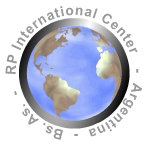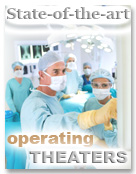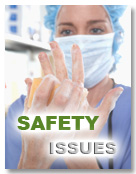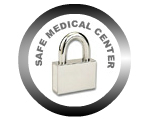
- RP Specialized in:
- Plastic Surgery in Argentina
- Treatments
- Breast Implant Surgery
- Rhinoplasty
- Vaser® Lipo System
- Liposuction
- Eyelid Surgery
- Tummy Tuck
- Breast Lift
- Facelift
- Lifting the Tip of the Nose
- Breast Reduction
- Double Chin Surgery
- Eye Shaping Surgery
- Chin Augmentation
- Ear Surgery
- Mentoplasty
- Eyebrow Lift
- Mini Facelift
- Cantopexy
- Deep Chemical Peel - Resurfacing
- Plastic Surgery Information
- Plastic Surgery Costs
- Cosmetic Procedures
- Hair Transplant
- Dermatology
- Phlebology
- Related information
- Related Links
- Web Directories
- Free Quotation
- Webmaster
» Deep Depth Chemical Peel or Chemical Resurfacing - Argentina
Table of Contents:
- » Pictures Before and After
- » General Information: risks, anesthesia, recovery, pre-operative tests, etc.
- » How to get a quote - Photographs necessary - Requirements.
» In Plastic Surgery, Experience Counts...
» General Information: risks, anesthesia, recovery, pre-operative tests:
What is deep depth chemical peel for?
It is a medical procedure which consists in a complete and deep regeneration of the facial skin. Results are amazing since it eliminates moderate to severe facial wrinkles, mottled-skin pigmentation due to aging and solar exposure, acne sequels or scarring, freckles, keratosis and pre-cancerous skin growths.
Based on the depth of penetration in the skin, medical peels may be divided into medium-depth and deep-depth peels. Deep-depth peel is performed in a single session per Winter season and medium-depth peel in 1 up to 3 sessions per Winter season.
Medium-Depth Chemical Peel: It penetrates the skin at 0.45mm. depth approximately.
Deep Depth Chemical Peel: It penetrates the skin at 0.60 mm depth approximately.
Chemical substances are used. The main ones are Phenol and Trichloroacetic Acid.
Are there any risks? Which complications may arise?
All surgeries involve Risks:
By giving you all the information you need to make a decision, including information on the risks involved, we show our respect for you and allow you to have the last say in all matters concerning your surgery. We also believe that this speaks volumes about RP Medical Center, about who we are and how we work. It is our responsibility to provide you with all necessary information. We consider that Quality goes hand-in-hand with Responsibility. All patients have a right to be explained how the surgical procedure will be performed, together with the potential risks and complications (which are not caused by a Physician’s errors or malpractice, but which derive from the surgery itself or cannot be anticipated), and the advantages and disadvantages of certain techniques, so that they can think it over and make a balance before making any final decision.
Any surgical procedure has risks (whether an optional surgery, which you choose to undergo, or an emergency surgery); some risks are common to all surgical procedures and others are specific to each type of surgery. No surgery is exempt from risk. A plastic surgery is, after all, a surgery. Risks (each under different incidence percentages; see below) range from post-surgery complications which can be secondarily solved (bad scarring, seroma, skin necrosis, etc.) to severe and fatal complications such as reactions to anesthesia, pulmonary embolism (blood clots or "small blood balls" which could migrate to the heart and block the pulmonary artery causing severe injuries or even death), among others.
In 1997, the results of a survey were disclosed in the United States, based on 400,675 surgical procedures involving Plastic Surgery and Surgical Repair, where 7 deaths were found. The rate of severe complications (hypotension, hematoma, infection, hypertension episodes, sepsis) was 0.47% (1 case every 230 patients). One death occurred every 57,000 patients, that is, a mortality rate of 0.0017%; slightly less than 1 death every 57,000 patients. The survey documented the approximate safety level for plastic surgeries conducted by certified plastic surgeons in authorized facilities in the US, during those years. Another survey conducted in the United States (from 1994 through 1998) further accounted for deaths occurred after Liposuctions. Survey findings reported one death every 5,000 patients, which represents a mortality rate of 0.02 % and 20 deaths every 100,000 liposuctions. The main cause of death was pulmonary thromboembolism.
Risks must be minimized by taking all appropriate preventive measures and complying with certain rules and requirements, including the requirement for pre-surgery tests, pre-operative and post-operative indications, the practice of surgeries in the proper facilities (which must be fully-equipped to cope with any inconveniences), patients’ full medical history, and their compliance with the Physicians’ guidelines after the surgery. It should be recalled that complications and risks may arise even where all precautions were taken and even if the patient is healthy. Given that these complications are not predictable, they may affect the patients of even the best surgeons in any country of the world, despite any precautions taken to reduce potential risks.
Who are the best candidates for this procedure?
In general, people with skin types I and II according to Fitzpatrick’s skin classification are the best candidates for this procedure.
Fitzpatrick’s classification of skin types:
- Type I: White. Always burns, never tans.
- Type II: White. Usually burns, tans with difficulty.
- Type III: White. Sometimes burns mildly, gradually tans.
- Type IV: Brown. Rarely burns, tans easily.
- Type V: Black: Rarely burns, tans quickly.
- Type VI: Black: Never burns, tans very easily.
Ideal candidates to undergo this procedure are those who present damaged and aged skin, with medium and deep wrinkles (they may or may not be premature), skin blemishes and sun-damaged facial skin (photo damage), scars or acne sequels.
What is this procedure like?
First, the skin should be cleaned thoroughly. After administering local anesthesia, the physician will apply the substance that will remove the damaged layers of skin to help the regeneration process. This procedure lasts from 15 minutes to 1 hour, depending on the type of peeling performed, either Medium-Depth or Deep-Depth.
What results are expected and how long do they last?
Results are amazing: pores, scars, blemishes, deep, medium and superficial wrinkles, freckles, etc. are removed, thus causing the face to rejuvenate and look more beautiful, young and fresh. The results last forever, although new freckles and blemishes may form as skin ages, but they can be reduced using lotions with high UV protection, or even better, sun blockers when exposing your skin to the sun.
What type of anesthesia we use?
Local anesthesia is used together with a sedative (this procedure is perfectly tolerable) in such a way to keep you awake and calm and your skin insensitive to pain.
What precautions should I take after this procedure? When can I go back to normal life?
Alter care
You can go back to work 1-2 weeks after the treatment. At the same time, you should follow an intensive skin-care program (moisturizers) for several months. After a Medium-depth peel, you can go back to work within 7-10 days, whereas in the case of a Deep-depth peel you can go back to work within 2 weeks, after which you can wear make-up. Within the first week after this procedure, crust (scab) is formed and there appears edema. You should take these days off work and have complete rest. Within 5 days the scab starts debridement and during the second week you can resume normal activities. At first the skin will show redness and within 4 weeks it will become less colored turning slowly into pink and then it will gradually fade away until complete vanishing within 3 to 6 months. 1 or 2 weeks after this procedure is performed a new thin, pink, and smooth skin appears. It will have a new texture, free of wrinkles and it needs not to be exposed to UV sun radiation. For this reason this surgery is performed in winter. Sun blockers will be used on a daily basis to avoid hyperpigmented blemishes and you should refrain from sunbathing for several months to protect the new layers of skin. After the surgery, the skin may look a little lighter, but it will get darker as the skin starts healing in time.
If I do not live in the City of Buenos Aires: How long should I stay approximately?
You will need to stay in Buenos Aires for 8 nights and 9 days.
Which are the required pre-surgical tests?
It is necessary to undergo the following pre-surgical tests within 1 month before the date of surgery:
- I. Blood test: hemogram, blood sugar, creatinin, hepatogram, clotting time, serology HIV.
- II. Cardiology: ECG and surgical risk.
Mandatory pre-surgical instructions:
- Put off smoking 1 month in advance (all smoking patients have an increased risk of skin suffering in the area being operated on and of a delayed healing of scars).
- Discontinue Aspirin intake (Acetyl salicylic acid) 1 month in advance.
- Discontinue Vitamin E intake 1 month in advance.
- Apply anti tetanus vaccine.
- Anticoagulated Patients: Consult your hematologist to change treatment schedule.
» How to get a quote - Photographs necessary to undergo a surgery - Stay - Requirements:
» To request the right quote and provide all necessary information, go to: "How to travel to undergo a surgery", and read "Step No. 1", "Make arrangements for a surgery by following these easy steps".
» Photographs required for Chemical Resurfacing: Please send 5 pictures of your face: 1 frontal photograph, 1 profile photograph of each side and 1 3/4 profile photograph of each side. It is important that pictures show the head and neck completely.
» Days of stay for Chemical Resurfacing: 8 nights, 9 days. For further information on stay days, minimum stay, and schedule, among other matters, go to "How to travel to undergo a surgery" , read "Step No. 3", " Make arrangements for a surgery by following these easy steps."
» Hospitalization: Not required. After the surgery, a 4-hour recovery period at the clinic is required. You may then move to your place of accommodation.
» Requirements: In general, laser or chemical deep peel procedures are performed on people with skin types I and II according to Fitzpatrick’s classification. Find out your skin type below. Please keep in mind that you must avoid tanning for several months after the peeling is performed and that you must use sun blockers to protect your skin.
>» Why are photographs necessary?
Not only are photographs necessary to avoid paying for an unnecessary and more expensive surgical procedure, but also to determine whether the surgery for which you have come to us is the best type of surgery for you. Photographs are essential for our Physicians to analyze your case, to know how to proceed and offer you the personalized treatment that sets us apart. Your photographs also enable us to make a more precise quote.









